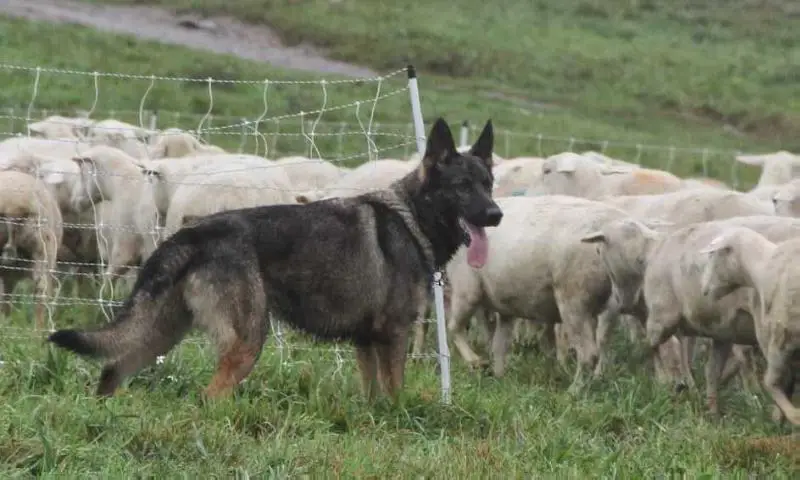
This is a placeholder text
Group text
by Blitzen on 28 January 2015 - 13:01
It sounds to me as if as Stephanitz also advised against breeding dogs that were too large, too square and lacking complete dentition. He wisely wanted it all in the GSD. I believe beauty mattered not to him, but he knew that without proper structure the breed would not be able to function as he envisioned. Why not breed for it all? He made a statement when he awarded the Sieger to Klodo - this is the ideal GSD in form and motion. Critiques say Klodo had a far reaching gait, was lower stationed than most of the current GSDs with a deeper chest. No protection tests at the Sieger then, were there? If not, all he had to go on was form and if he didn't think that was imporatant, why was he judging a Siegerschau in the first place?
by Mackenzie on 28 January 2015 - 14:01
In the beginnings of the breed there had to be a way to determine the future for the GSD and develop a process whereby development of physical attributes would benefit that development. This led to the dogs being shown as a means of regular comparison of how the development was progressing. Dogs were judged by first having to have a working qualificaton and all that goes with that e.g. character etc, then take into account the physical development needed to improve stamina and fitness to carry out the working dog tasks whatever the discipline. There also had to be a process within this to note what each dog brought to the breed in a positive way in terms of what was passed on to the progeny in the character, size, health and necessary improvement in the anatomy. For many years this system benefited the breed and that is why it has lasted so long. The male classes were always judged by the President of the SV who had to explain his reasons for taking the breed in the right direction needed to maintain a working dog. Today's dogs cannot be compared to the dogs used in the early days of the breed in terms of appearance.
Our breed developed steadily from it's beginings and the dogs over a period of time changed in appearance but it was still meeting the original criteria. The type was consistent throughout the breed until after WW2. When I first came into the breed in 1970 in the UK there was a very marked difference between the dogs in Germany and those in the UK and other parts of the world. From this time on when we started to see the German Judge's coming over one of the things that they liked was the rear angulation of the animals and the glamour but the UK dogs did not have to have a working qualification to be shown and, therefore, dogs were judged purely on appearance. This is still the case today.
I am not sure as to exactly when the changes towards the appearance in today's began but I noticed it, I think, from about 1980 and more rapidly after Dingo was made Sieger in 1983. Uran was made Sieger for the first time by Hermann Martin in 1984. I also think that it was around this time that the working side were not so happy about where things were going. The divisions began. The colours grey, black and bi-colour were not seen in the breed ring anymore. The dogs for show lines only began here in earnest and produced many of the problems that we see now. With this development came the money people that v Stephanitz warned against.
To get back in terms of all of the traits that we so much treasured will take many, many generations to achieve if that is still possible.
Mackenzie
by Blitzen on 28 January 2015 - 14:01
Just as a side note, Klodo was described as a grey sable that carried the white gene. Thanks to GSD Lineage for that information.
by Ibrahim on 28 January 2015 - 15:01
Here what herding lines and top winners of herding competitions looked like. Kirschental believed in temperament, work ability and structure.
This is the Structure that Kirschental started with and based his line on
Senta vom Kirschental 1964
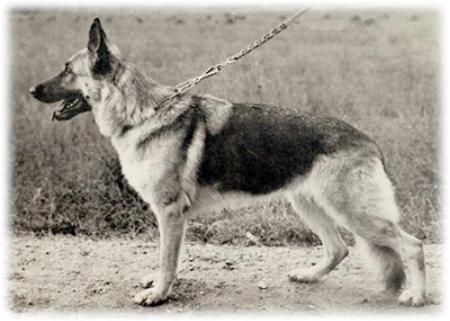
Perle vom Kirschental 1964
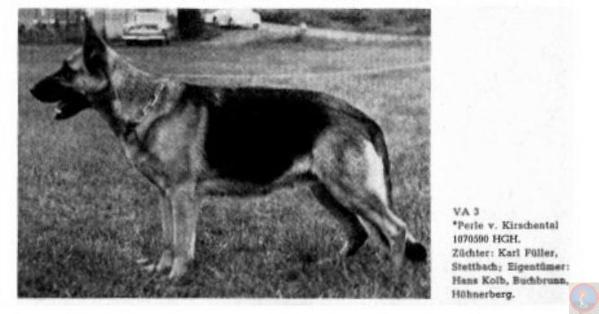
Pirol vom Kirschental 1964
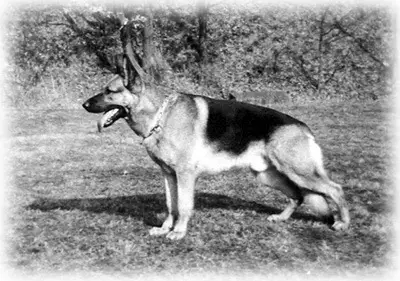
by Ibrahim on 28 January 2015 - 15:01
Then he developed it to his understanding of the standard and creator vision to this
Wacker Eiringburg 1973
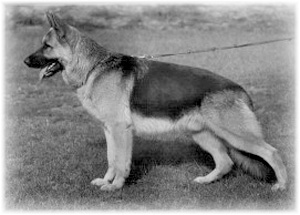
Uwe vom Kirschental 1978
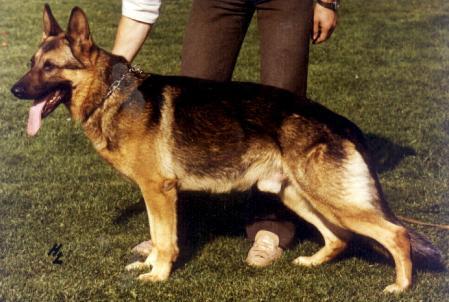
Xitta vom Kirschental 1978
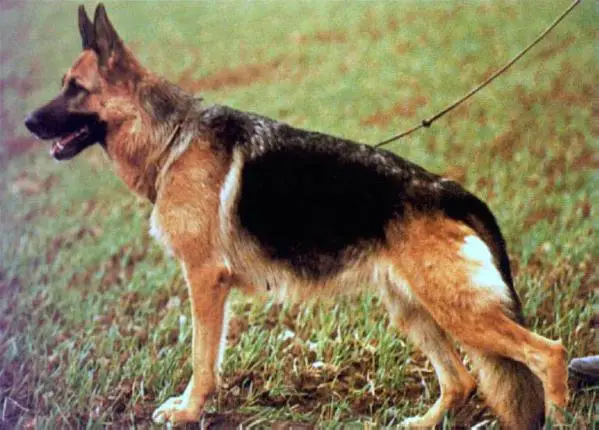
Ux vom Kirschental 1983
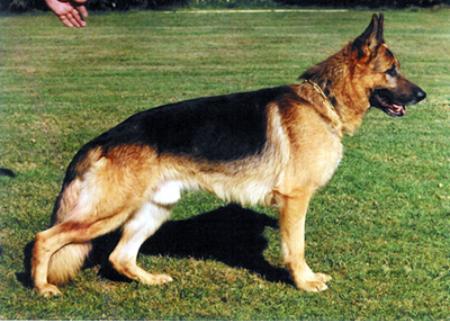
Eiko vom Kirschental 1983
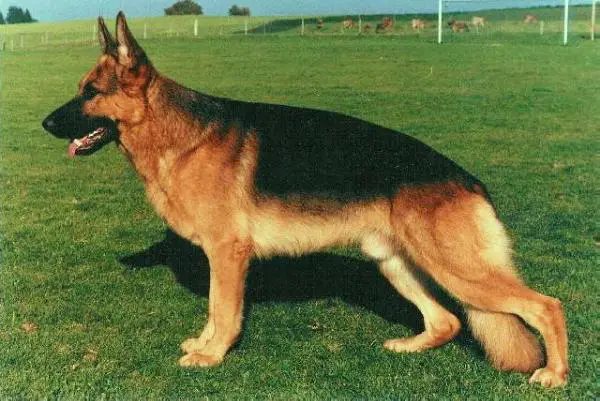
Those dogs are not what work line dogs look like nor what modern show line looks like
by Blitzen on 28 January 2015 - 15:01
http://www.pedigreedatabase.com/german_shepherd_dog/dog.html?id=393341-abel-vom-quasliner-moor
A more recent HGH x 10 GSD - also UD, Sch3, RE, breed surveyed, HOT
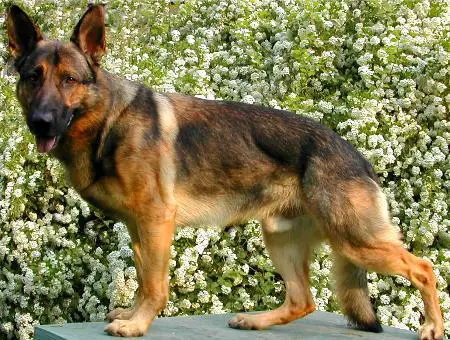
by Blitzen on 28 January 2015 - 15:01
by Ibrahim on 28 January 2015 - 16:01
Eiko vom Kirschental
part 1
part 2
Any objection to Eiko's temperament, work ability or structure?
by alienor on 28 January 2015 - 16:01
@ Gustav page 10 ; your description of the straight wall. Very interesting thank you. I see exactly what you are saying.
My observations having both WL and SL.
Both 'help' me with animals, the WL will herd but his prey drive is very high and it was difficult for him to learn to not to BITE too hard. The SL has no interest in herding. He has a soft bite, (which might be a good thing if you were a sheep), is way taller, very fast and agile, but he would not hold up to stress like the WL and hesitates where the WL charges ahead. He will stay with the animals if I leave, however, (unlike the WL) but he is in more of a guarding mode rather than herding.
Another point of interest, most people who don't know GSD's say the SL is the more 'handsome' of the two. So that might explain some of the tendency to breed for a 'look' rather than function. As far as the pet angle, the WL would be WAY more dog than the average dog owner would want to deal with. The SL is sweet and way easier to handle.
There are certainly two parallel lines of GSD's going here and they are no doubt growing more distinct in every generation.
Having said all this, and speaking as a dog owner and certainly not an expert in any field of training; I personally prefer the WL spirit/nerve/drive and I think the breed as a whole would benefit from more, rather than less of it.
Contact information Disclaimer Privacy Statement Copyright Information Terms of Service Cookie policy ↑ Back to top





